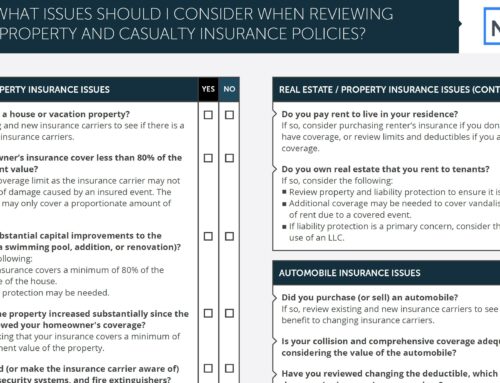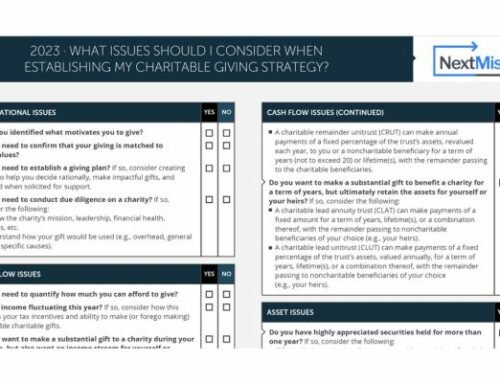Social Security: The Basics
You pay your payroll taxes every month but unless you’re close to retirement, you probably don’t give Social Security much thought. Maybe you think about it once a year when the news updates when the Social Security trust fund will run out of money. Maybe you think I don’t need to worry about it because there won’t be any money left for me.
I’m kicking off another series. This one will focus on Social Security. I’ll explain the basics of Social Security, the claiming decision you’ll need to eventually make, and why understanding how it works will have a BIG impact on how much money you’ll receive.
Part 1: Social Security Retirement Basics
Part 2: Spouse versus Survivor Benefits
Part 3: Case Study
Introduction
Social Security is a critical safety net providing financial support to retirees, disabled individuals, and survivors. In this blog post, we delve into the fundamentals of Social Security, focusing primarily on the retirement aspects to provide you with a understanding of how this program works.
Social Security Eligibility and Coverage
Social Security benefits are designed to provide crucial financial support to individuals who have paid into the system through payroll taxes. Eligibility for various benefits is determined by a combination of factors, including your work history, age, and disability status. Here are the key components of eligibility in more detail:
1. Work Requirements
To be eligible for Social Security benefits, you typically need to have earned enough “credits” by working and paying Social Security taxes. Credits are earned based on your total yearly wages or self-employment income. In 2023, you earn one credit for every $1,470 in earnings, up to a maximum of four credits per year. The exact number of credits you need to qualify for benefits depends on your age and the type of benefit you’re seeking. Generally, you need 40 credits (equivalent to about 10 years of work) to qualify for retirement benefits on your own record.
2. Age Requirements
You can start receiving Social Security retirement benefits between ages 62 and 70. If you start receiving retirement benefits before your Full Retirement Age (FRA) your monthly benefit amount will be reduced. Waiting until your Full Retire Age allows you to receive your full benefit amount. You can also increase your benefit if you wait beyond your FRA up to age 70. Benefits do not increase beyond age 70. We’ll discuss more about this in the benefits section.
Coverage Details
Social Security covers several types of benefits, each serving a specific purpose. They are retirement, disability, and survivor benefits, as well as Medicare. Disability and Medicare are important aspects, but beyond the scope of this article.
1. Retirement Benefits
Retirement benefits are the most well-known aspect of Social Security. These benefits provide financial support to individuals who have reached their Full Retirement Age and have accumulated enough credits. You have the option to start receiving retirement benefits as early as age 62, but claiming later can result in higher monthly payments.
2. Survivor Benefits
Survivor benefits offer financial support to the surviving spouses, children, and dependents of a deceased worker. These benefits provide a lifeline to families facing the loss of a primary wage earner. Eligibility and benefit amounts vary based on your relationship to the deceased and their work history.
Navigating Eligibility and Applying for Benefits
Understanding your eligibility and the specific requirements for each type of benefit is crucial when planning your financial future. The Social Security Administration provides detailed information, resources, and online tools to help you determine your eligibility. Go to SSA.gov (link).
[Note: While they used to send annual statements to you, you now need to establish an account to get your Social Security statement. If you haven’t established an account or checked your statement recently, I encourage you to do it. You want to make sure your annual income is correct on the statement. It’ll also project your benefits based on your work history]The process of applying for Social Security benefits can be complex. Meeting eligibility criteria is just the first step. Depending on your situation, you may need to provide various documents, medical records, and other information to support your claim.
Social Security Benefits Explained
Retirement Benefits
Retirement benefits are a cornerstone of the Social Security program, providing financial support to individuals as they transition from the workforce into retirement. These benefits are designed to replace a portion of your pre-retirement income. This offers a measure of financial security and for many THE only income they have in retirement.
The other key fact about Social Security benefits is they are indexed to inflation.
Full Retirement Age (FRA): Your FRA is the age at which you can receive your full benefit amount without any reduction. Your Full Retirement Age (FRA) is set by Congress in Social Security law. For those born between 1948 and 1954, it is 66. For those born in 1960 or later, it’s 67. For those born between 1955 and 1959, its between 66 and 67. Claiming benefits before your FRA results in a permanent reduction in your monthly benefit, while delaying benefits past your FRA can lead to higher monthly payments.
Early vs. Delayed Retirement: You have the option to claim retirement benefits as early as age 62. However, if you choose to do so, your monthly benefit will be permanently reduced. On the other hand, if you delay claiming benefits beyond your FRA, your benefit amount increases by 8% per year for each year of delay, up to a maximum of 70 years old. This delayed retirement credit incentivizes individuals to continue working and delay claiming, leading to higher monthly payments in the long run.
Example:
Your FRA is 67. You expect your benefit to be $3000 per month.
If you claim at 62, your benefit will be reduced 30% for a monthly benefit of $2100.
If you claim at 65, your benefit will be reduced 13.3% for a monthly benefit of ~$2600.
Wait to claim at 70 and your benefit will be increased 24% for a monthly benefit of $3720.
Calculating Retirement Benefits: The Social Security Administration calculates your retirement benefit based on your average indexed monthly earnings over your 35 highest-earning years. The calculation considers inflation and wage growth over the years. The formula considers these earnings, applying different percentages to portions of your income to arrive at your Primary Insurance Amount (PIA). Your PIA represents the benefit you’ll receive if you claim at your Full Retirement Age.
Understanding how your claiming age and earnings history interact is crucial for maximizing your retirement benefits. It’s important to note that your monthly benefit can also be affected by factors such as working while receiving benefits before your FRA and taxation of benefits based on your total income. If you claim Social Security before your FRA, your benefit payment will be temporarily reduced if you earn more than the earnings limit. You can work after Full Retirement Age and earn as much as you’d like without reducing your benefit payment.
Social Security and Retirement Planning
Integrating Social Security into your retirement planning is crucial. Even if you don’t expect to rely on Social Security, it can help you preserve other assets that you can use or gift to your heirs or charity. When you claim benefits (as seen in the example above) can significantly impact how much you, and if you’re married your spouse, will receive. Consider factors like your life expectancy, financial needs, and other sources of retirement income. [We’ll look at claiming strategies in our case study in part 3 of this series.]
Tax Implications: Depending on your total income, a portion of your Social Security benefits might be subject to federal income tax. Understanding these tax implications can help you better plan for your retirement income. The income limits for benefit taxation are low so if you have a military or other pension it is highly likely your Social Security benefits will be taxed.
Future Challenges
You probably have seen the yearly headlines that come out when they update the numbers for the Old-Age and Survivors Insurance (Social Security) Trust Fund. It’s now projected to run out of money in 2033. At that time Social Security will only be able to pay 77% of the project benefits from monthly payroll taxes.
While there have been reports that Congress has begun to work on this, so far there haven’t been any breakthroughs. I expect something will get done, but the bad thing is by waiting the range of options decreases and the changes (increase in taxes or working ages) have to be bigger.
Conclusion
Social Security is a cornerstone of financial security for millions of Americans. By understanding its various benefits, eligibility criteria, and planning strategies, you can make informed decisions to maximize your benefits and ensure a more secure retirement.
Here’s part 2: Spousal and Survivor benefits (link) and how that can influence claiming strategies.
Like this article. You might also like this one on the Retirement Red Zone (link).




